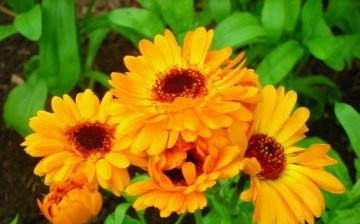Growing calendula in a personal plot
Calendula is one of the most valuable medicinal plants that is widely used in folk medicine for the treatment of a wide variety of diseases, as well as for body skin and hair care. Growing calendula is absolutely not a laborious process, since the plant takes root on absolutely different soils and in different climatic conditions.
Calendula can grow even in regions where nighttime temperatures drop to -5 degrees below zero. Although it should also be noted that in dry and hot zones, the plant very quickly becomes small, valuable flowers of the plant, which are most often used in folk medicine, disappear.
The vegetative period of calendula is one year, and the plant reproduces by seeds. Seeds of calendula are similar in shape to marigolds, therefore, calendula is very often called marigolds. You can sow the plant both in autumn, around October, and in early spring - in April. In the spring, the seeds sprout quickly enough and after 7-10 days the first leaves of calendula appear.
Growing calendula does not require any painstaking care from their owner, but if it has not rained for too long, then it is advisable to additionally water the plant at night, then there will be more flowers and they will be large. In caring for a plant, it is also very important to cut off faded inflorescences in time, which will help prolong flowering and the flowers will be larger.
Most often, calendula flowers are grown near garlic and onions, because they are an excellent protection against pests of these crops, besides, the plants take root well with each other.




Growing calendula doesn't really cause any hassle. In our garden, it has been growing by itself every summer for many years.
And I like calendula, only while the flowers are just emerging. And then the ripening seeds and wilting foliage become very ugly and unkempt.